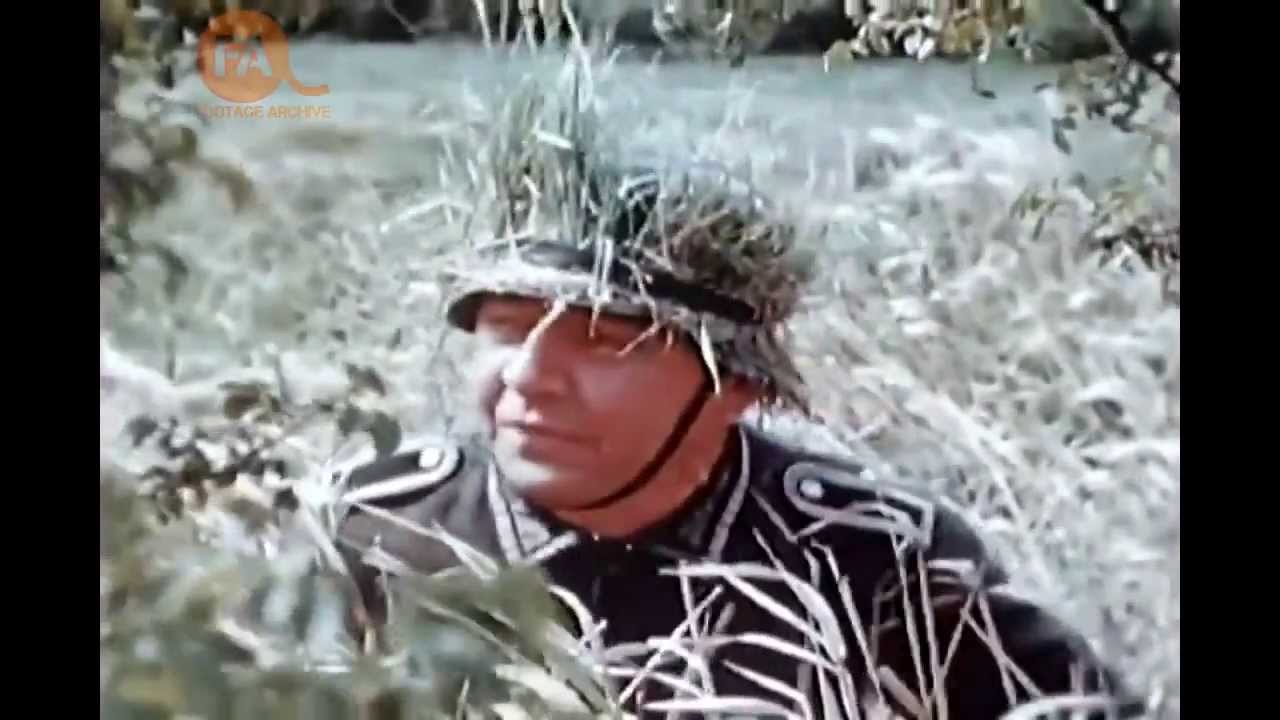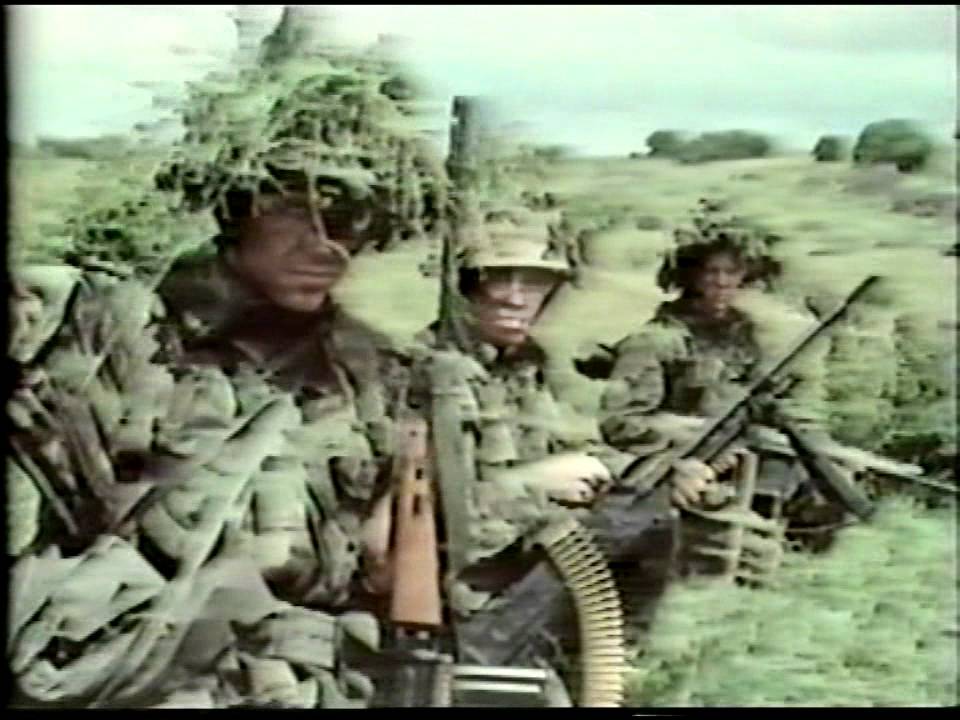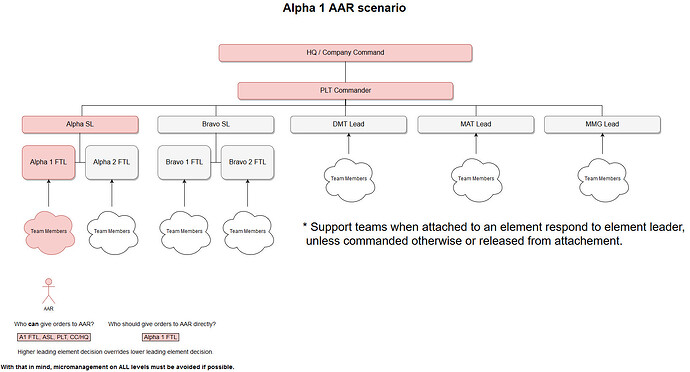So I’ve seen that argument in last thread in war stories about leading where Dachi and Berenton got into a peaceful argument but war stories is not really the place for that so I made this thread. I’m just gonna pick it up from there so for the context go on last war stories thread.
I have to side with Berenton on this one. SL has the authority to command each and every soldier within their squad (a.k.a micromanagement) but this should be avoided at all costs. There is a chain of command that you have to follow. About 95% of the time SL is there to give orders to FTL. Let’s use that example with 1 element moving and 1 element covering. Platoon gives a general order to do something, SL creates a plan in their head and tells FTLs: alpha 1 get a position to cover alpha 2 as they cross. At this point it’s FTL’s job to say: alpha 1 on me, we’re going to move there, get a position and cover alpha 2. FT members are to wait for FTL to say something like "we’re doing this now". Order might be more specific like "I want you to go to this exact location and cover alpha 2" but then again FTL says when the team moves and when they get to the place he decides(or not) where to put his soldiers so they are the most effective.
If you want to break down fireteams to do some partial micromanagement you should say "alpha 1 I need 2 of your guys to watch my SW and I also need 2 guys from alpha 2 to watch my SE", the FTL then says "you and you, go and do what SL says" and those 4 guys are supposedly under full SL command until told to go back to their teams.
If you don’t do it more or less how it’s described above then it becomes chaotic. The statement that FTL is there keep an eye on their team is ridiculous Let’s go back to the example, SL says "alpha 1, cover alpha 2 as they cross" and alpha 1 just start moving as soon as they hear it and they don’t get any formation going, not planning any route, just going as they think they should go. FTL at this point feels like he has 3 dogs on a leash with a guy blowing his dog whistle so the animals come towards him.
So to sum it up, PLT: gives more or less general orders following the plan from briefing or a modified one(since original plans almost never work out in 100%)
SL: Creates a plan of movement and tells fireteams what to do(again, can be a general order or more specified)
FTL: follows orders and micromanages his fireteam members and if orders are not specified enough he creates movement plan for his team
Micromanaging 9 people is very bad, giving out orders to people that are supposedly under management of FTL is bad(usually), FTL is not a grenadier that keeps an eye on 3 other people, FTL does micromanagement of his 3 people.



